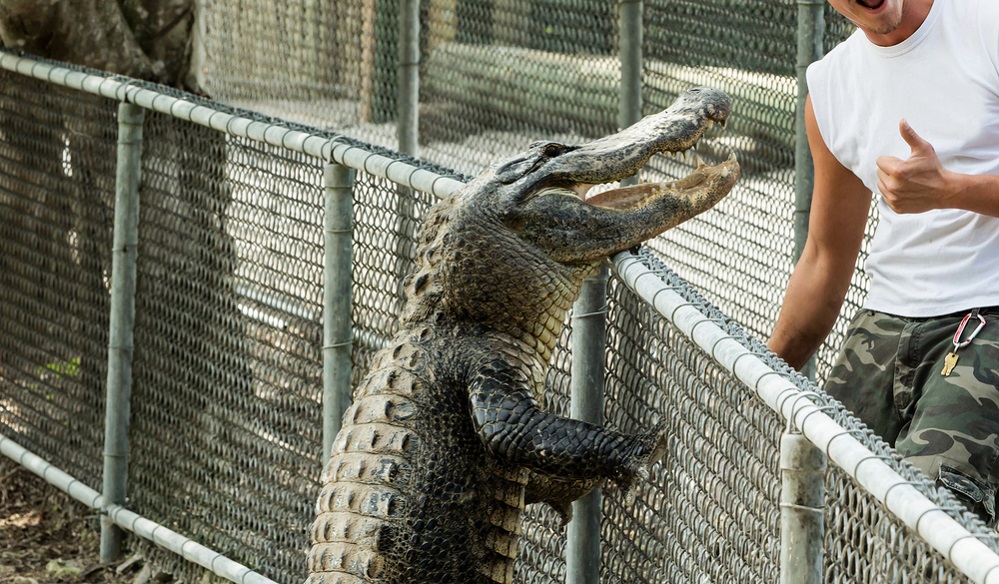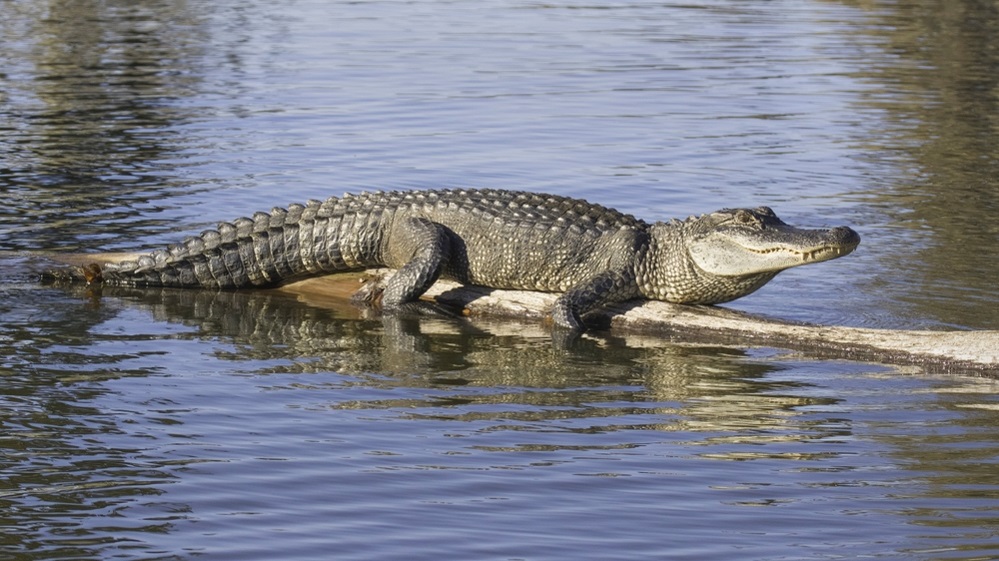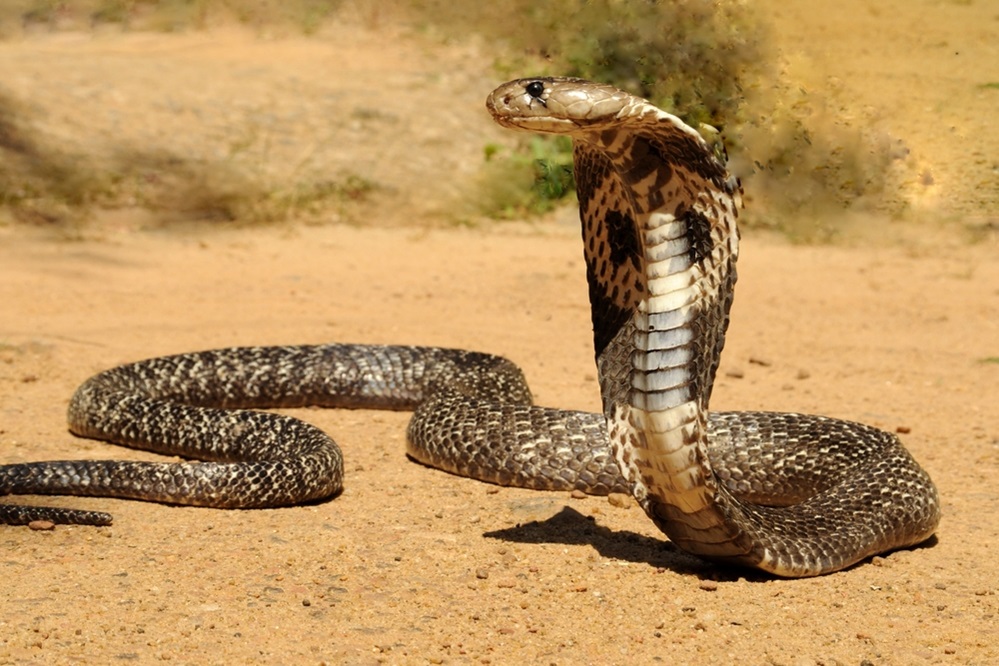Imagine a large reptile with powerful jaws, a thick armored body, and a surprisingly long tail. That’s an alligator!
These ancient creatures have roamed the earth for millions of years, changing very little since the time of dinosaurs. When you think of alligators, you probably picture the southeastern United States, especially swampy areas like Florida.
Alligators are truly American icons, found in many states across the South. Alligators are perfectly built for life in swamps, marshes, lakes, and slow-moving rivers. They play a very important role in these watery habitats, helping to keep the whole environment healthy.

Alligator Species and Distribution
While most people think of the iconic American alligator when they hear the word “alligator”, there are actually two distinct species of these fascinating reptiles. Let’s take a closer look at where these different species live and what makes them unique.
The American Alligator

Size and Appearance: American alligators are impressive in size. Males can grow up to a massive 15 feet long and weigh over 1000 pounds, while females are a bit smaller but still intimidating. They have a broad snout, dark, greenish-black skin with a lighter belly, and a powerful tail that helps them swim.
Where They Live: The American alligator reigns supreme in the southeastern United States. Their range covers all of Florida and Louisiana, as well as large portions of Georgia, Alabama, Mississippi, coastal areas of the Carolinas, eastern Texas, southeastern Oklahoma, and southern Arkansas. They thrive in freshwater habitats like swamps, marshes, lakes, and slow-moving rivers. Some alligators can even tolerate brackish water (slightly salty).
The Chinese Alligator

Size and Appearance: Much smaller than its American counterpart, the Chinese alligator typically reaches lengths of only around 5 feet. It has a similar body shape but tends to be more heavily armored than the American alligator.
Where They Live: The Chinese alligator is critically endangered and faces a difficult battle for survival. Its range is extremely limited to a small portion of the lower Yangtze River valley in eastern China.
Conservation Status: Unlike the American alligator’s conservation success story, the Chinese alligator remains highly threatened due to habitat loss and fragmentation.
Alligator Behavior
Alligators might look slow and lazy, but don’t be fooled! These ancient reptiles have a fascinating range of behaviors that help them survive and thrive in their wetland environments. Let’s dive into the world of alligator hunting strategies, social interactions, and how they raise their young.

Hunting and Diet
Alligators are the ultimate ambush hunters, perfectly adapted for lying in wait. They can remain partially submerged in the water for long periods, with only their eyes and nostrils showing, blending in effortlessly with logs or floating vegetation. This sneaky approach allows them to surprise their prey.
Alligators aren’t picky eaters, meaning they’ll eat pretty much anything they can catch! Their diet mainly consists of fish, turtles, snakes, birds, and various small mammals like raccoons and muskrats. Big alligators will fearlessly prey on deer, wild hogs, and occasionally, even other alligators.
Alligators have an incredibly powerful bite, with rows of sharp teeth designed for grabbing and holding onto prey. They don’t chew their food, mainly swallowing smaller animals whole.
For larger prey, they’ll use their powerful neck muscles to perform a “death roll,” spinning violently to tear off chunks of meat. This impressive combination of stealth, opportunistic feeding, and incredible strength makes alligators intimidating predators in their wetland environments.

Social Behavior
Alligators generally like to keep to themselves. They don’t form social groups or families like some other animals. However, they’ll tolerate each other in areas where food is plentiful.
Alligators, especially large males, can be highly territorial. They’ll aggressively defend their favorite parts of swamp or lake from other alligators, often engaging in fights that can result in serious injuries.
Alligators communicate using a variety of sounds, postures, and even subtle vibrations in the water. A hissing alligator is sending a clear warning to stay away! Deep, booming bellows are used during the breeding season, both to attract mates and tell other males to stay away. They also use head slaps and tail thrashing as displays of dominance or aggression.
Reproduction

Alligators mate in the spring, typically around April or May. Males use loud bellows and other displays to attract females and claim their territory. Female alligators are super protective mothers-to-be!
They build large nests, often over 6 feet wide, using mud, leaves, and other vegetation. They lay around 30-50 eggs within this nest and fiercely guard it from any predators that come too close.
Baby alligators hatch after about 65 days and make adorable chirping noises to communicate with their mother. Alligator moms will protect their young for up to a year, sometimes even carrying them in her jaws to safer locations.
The Importance of Alligators
Alligators are way more than just big, scary swamp creatures! They play a super important role in keeping their wetland homes healthy.

How Alligators Shape Wetlands
Think of alligators as wetland builders!
During dry seasons, they use their powerful tails and claws to dig out holes called “gator holes.” These holes become like little lifelines, retaining water and providing a safe place for fish, turtles, snakes, wading birds, and countless other creatures when surrounding areas dry up.
Gator holes do more than just hold water; they change the whole landscape! They create different areas within the wetland, giving unique spaces for all sorts of plants, bugs, and other animals to live. This variety makes the whole wetland healthier and stronger.
Alligators Rule the Food Chain
As apex predators, alligators sit at the top of the wetland food chain, and their impact ripples throughout the entire system. By preying on various species like fish, turtles, snakes, and even invasive mammals, they help regulate populations and prevent any single species from becoming too numerous and disrupting the natural balance.

The influence of alligators flows down the food web. Their presence indirectly benefits plants by keeping populations of plant-eating animals in check. They even provide food for scavengers like vultures and raccoons when they leave pars of their meals behind.
Economic and Cultural Value
Alligators are good for the economy in southeastern states like Florida and Louisiana. Ecotourism centered around activities like airboat tours and safe alligator viewing brings in significant revenue and supports local jobs.
These fascinating creatures hold a special place in the cultures of the southeastern U.S. They feature prominently in the folklore and storytelling traditions of Native American tribes who have lived alongside alligators for a very long time.
Alligators are also ingrained in the pop culture image of the region, appearing as mascots and even in regional cuisine.
Coexisting with Alligators

Alligators might look intimidating, but with a basic understanding of their behavior, we can learn to share the wetlands safely. Remember, they’re wild creatures deserving of respect and caution.
Understanding Alligator Behavior
Alligators are generally not aggressive towards humans, but it’s essential to remember they are wild animals. Most negative encounters occur when people misunderstand alligator behavior or get too close. Knowing where alligators live and respecting their space are the most important things you can do to stay safe.
Avoid swimming in lakes and rivers known to have alligators, especially at dusk or dawn when they’re most active. Never approach an alligator, especially a mother guarding her nest. If you see one on land, back away slowly and maintain a safe distance.
Safety Tips

It’s crucial to supervise pets and children around water where alligators might be present. Be extra cautious around shorelines at dawn and dusk. Never feed alligators! Doing so makes them associate humans with food, making them bolder and increasing the chance of dangerous encounters. It’s also illegal.
If an alligator approaches you on land, back away slowly and make noise if necessary. If you are ever concerned about a specific alligator, call your state wildlife agency.
Responsible fishing practices also play a part in alligator safety. Never discard fish scraps or bait in the water or on shore near areas people use. Alligators might become attracted and associate the area with food.
Finally, never try to handle an alligator. Even small alligators can inflict serious bites. If you see an injured or displaced alligator, don’t approach it; contact your local wildlife authorities.
Responsible Alligator Encounters

The safest and best way to experience alligators is from a distance. Many national parks and wildlife refuges in the Southeast have special spots where you can watch alligators safely, like boardwalks or organized tours.
Support businesses that prioritize alligator safety and responsible wildlife viewing practices. This way, you can enjoy the thrill of seeing alligators in their natural habitat while doing your part to protect them.
Alligator Conservation
Alligators are magnificent creatures that play a vital role in their ecosystems. Though their populations are healthy now, they weren’t always so fortunate. Let’s explore the remarkable comeback story of the American alligator and what we can do to ensure their continued success.
The American Alligator's Comeback

The American alligator has a true comeback story! They were once hunted so much they were almost wiped out. Thankfully, because of strong laws protecting them and people changing how they think about alligators, their numbers have bounced back in a big way.
Now you can find them all over the places they used to live! This amazing recovery shows that when we work to protect animals and change how we interact with them, we can make a huge difference.
Threats Still Exist
While their populations are healthy overall, alligators still face some threats. Habitat loss due to development is a major concern, as it destroys the wetlands they call home. In some areas, conflicts between humans and alligators can arise, especially when development encroaches on alligator habitat.
Additionally, pollution and changes in water flow due to human activities can negatively impact alligator populations in some localized areas. It’s important to remain vigilant in protecting their habitats and promoting responsible coexistence to ensure alligators continue to thrive.

Responsible Wildlife Viewing
One of the best ways to support alligator conservation is through responsible ecotourism. By choosing tour operators and businesses committed to ethical wildlife viewing, you contribute to the economic value of healthy alligator populations. This demonstrates that alligators are more valuable alive and thriving in their natural habitat.
Additionally, learning about alligators and their importance in the ecosystem helps spread awareness and encourages others to care about conserving these fascinating creatures.
Alligator vs. Crocodile
What’s the difference between a crocodile and an alligator?
While they might both be large reptiles with powerful jaws, there are key differences between alligators and crocodiles. Understanding these distinctions can help you identify these incredible creatures and appreciate their unique adaptations.
Key Differences

The most obvious difference between alligators and crocodiles lies in the shape of their snouts. Alligators have a broad, U-shaped snout, while crocodiles have a longer, V-shaped snout.
Another way to tell them aprat is their teeth. When an alligator closes its mouth, you usually can’t see its bottom teeth. Crocodiles, on the other hand, have an interlocking jawline where some of their lower teeth are visible even when their mouth is closed, creating a toothy grin!
Alligators generally prefer freshwater habitats, while crocodiles are more tolerant of saltwater and can even live in coastal areas. This has to do with specialized glands crocodiles possess, allowing them to excrete excess salt.
Alligators tend to be darker in color, typically dark gray or black, while crocodiles are often lighter in appearance, with shades of olive green or brown.
So, which is more dangerous, alligator or crocodile?
While both alligators and crocodiles can be dangerous, crocodiles generally have a reputation for being more aggressive towards humans.
Geographic Distribution

American alligators have a specific range, found only in the southeastern United States. Crocodiles, on the other hand, have a much wider global distribution, found in parts of Africa, Asia, Australia, and Central and South America.
While their territories don’t typically overlap, there’s one fascinating exception: extreme southern Florida. Here, a small population of American crocodiles exists, making it the only place in the world where you might encounter both species!
15 Fascinating Alligator Facts
- Alligators have one of the most powerful bites in the animal kingdom, capable of crushing bones and turtle shells with over 2000 pounds of force per square inch.
- Alligators are closely related to dinosaurs, and their ancestors roamed the Earth millions of years ago!
- A large alligator can grow to lengths of over 15 feet and weigh over 1000 pounds.
- Alligators can swim up to 20 miles per hour, using their powerful tails for propulsion.
- Despite their size, alligators can lunge surprisingly fast in short bursts on land to ambush prey or defend themselves.

- Alligator nests can hold anywhere from 30-50 eggs.
- Baby alligators make cute chirping noises to communicate with their mother.
- Alligators are cold-blooded and rely on the sun to regulate their body temperature.
- They have special eyelids called nictitating membranes that protect their eyes underwater.
- They are surprisingly long-lived, with some individuals living for over 50 years in the wild.
- An alligator can go through thousands of teeth in its lifetime! Lost teeth are continuously replaced.
- The sex of an alligator hatchling is determined by the temperature of the eggs within the nest.
- Alligators have a complex system of pressure receptors along their jaws that help them detect prey in murky water.
- Alligators play a vital role in their ecosystems by keeping populations of fish, turtles, and other animals in check.
- In some places, alligators might help control invasive species, such as the Burmese python in parts of Florida.
FAQs
How long do alligators live?
Alligators have surprisingly long lifespans. In the wild, they can live 30-50 years, and some individuals in captivity have lived even longer.
Which is the biggest alligator in the world?
A large male American alligator can grow over 15 feet long and weigh over 1000 pounds. Females are typically smaller, but still reach impressive sizes.
Can alligators run fast on land?
While they might look lumbering, alligators can charge surprisingly fast in short bursts on land, reaching speeds of up to 10 miles per hour. However, they tire quickly.
Are alligators dangerous to humans?
Alligators are wild animals and should always be treated with respect and caution. While attacks on humans are rare, they can happen, especially if an alligator is provoked or feels its nest is threatened.
What's the difference between alligators and crocodiles?
Alligators have a broad, U-shaped snout, while crocodiles have a narrower, V-shaped snout. You usually can’t see an alligator’s lower teeth when its mouth is closed, but a crocodile’s interlocking teeth remain visible, giving them a toothy grin.
Where can I see alligators safely?
The safest way to see alligators is from a distance. Many national parks and wildlife refuges in the southeastern U.S. have designated alligator viewing areas. Organized tours with experienced guides are also an excellent option.
What should I do if I encounter an alligator?
If you see an alligator, keep a safe distance and don’t approach it. If an alligator hisses or seems threatening, back away slowly. Never feed an alligator!
Are alligators endangered?
The American alligator is a conservation success story and their populations are thriving. However, habitat loss and human conflict remain potential threats in some areas.
Is it legal to keep alligators as pets in the United States?
The legality of keeping alligators as exotic pets in the United States varies depending on the state and local regulations. Some states allow private ownership of alligators with certain permits and restrictions.
Conclusion
Alligators are truly remarkable creatures, a testament to the resilience and wonder of nature. With their powerful presence and ancient lineage, they play a vital role in the wetlands of the southeastern United States. While it’s important to understand the potential dangers alligators pose and respect their space, they are also deserving of our admiration and conservation efforts.
By learning more about alligators, we can better appreciate their importance in the ecosystem and foster a sense of responsible coexistence. Whether observing them from a safe distance or supporting organizations that protect their habitats, we can all play a part in ensuring these fascinating reptiles continue to thrive for generations to come.














